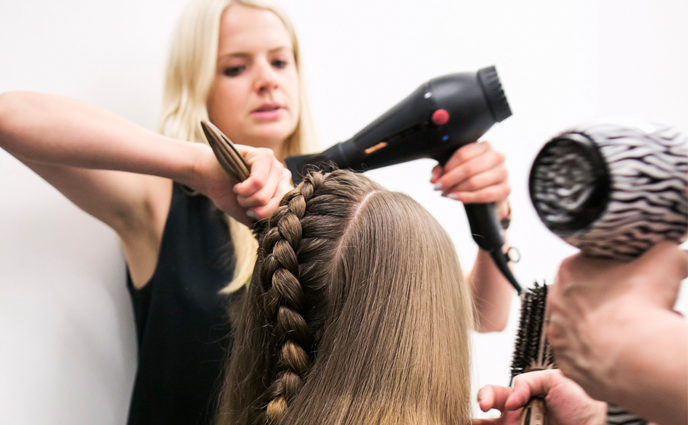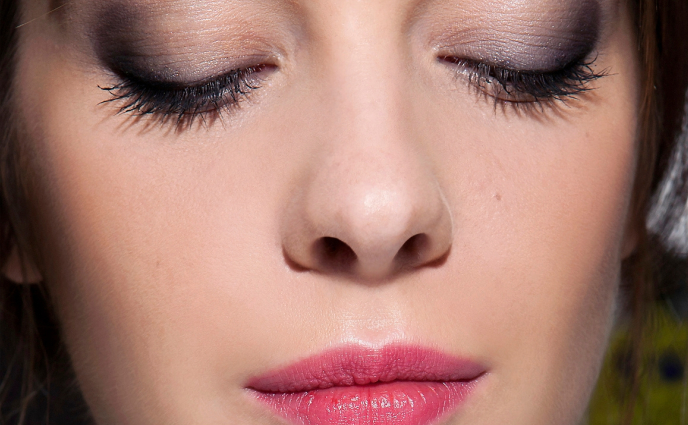One of the most common lipstick mistakes people make happens long before they even choose a color. "It's when they don't exfoliate their lips regularly," says Blair. "That affects the wear and application of their lipstick." Think: Dry, dehydrated lips and flaky, peeling color. Just as facial exfoliation helps skin-care products penetrate better, removing dead skin cells from your lips helps lipstick absorb and stay put.
Incorporating lip exfoliation into your routine gives you an even, smooth surface to work with -- a clear canvas -- and is especially important for people with superdry lips. Blair recommends making your own DIY lip scrub (all it takes is a teaspoon of sugar, mixed with a dollop of lip balm) to prep your lips.
After exfoliating, it's important to follow with a nice hydrating lip balm. (Try Nars Pure Sheer SPF Lip Treatment, $25). Smith recommends applying your balm several minutes before you plan to do your makeup, so it has time to sink in.
Smith also stresses that a little goes a long way. "Too much lip balm makes lipstick move -- as in, bleed or feather out," she says. If you have excess balm on your lips, make sure to "blot it off pre-lipstick application."
The same way that a foundation primer helps keep your makeup from slipping off, lip primer "gives the lipstick something to hold onto," Blair says. "A lip primer with silicone prevents the color from feathering or sinking into fine lines." (We recommend Stila Lush Lips Water Plumping Primer, $21).
Don't have lip primer? Blair says lightly dusting your lips with powder, concealer or foundation pre-lipstick application has the same effect, while enhancing your lip color.
Highlighting your Cupid's Bow (that's the little dip in the center of your top lip) with a touch of light-reflecting concealer defines the color and shape of your lips. Many people wait until they've finished applying their lip color to highlight, but Blair suggests doing it the other way around.
"Highlighting the Cupid's Bow before you apply your lipstick will give you a more natural highlight and won't alter your shape," she says. Plus, you won't have to risk messing up your finished color with a slip of the brush.
Nix that mental image of bad '90s lip liner, and hear us out. Smith and Blair agree that one of the gravest lipstick mistakes you can make is wearing bright lipstick without liner.
"Liner is required for full lip service," says Blair. In other words, your bold red lip is doomed without a matte base for the color and a clean, defined edge, created with liner.
That said, Smith warns that there's a right way to do liner -- and a host of wrong ways. First, don't pick a pencil that's darker than your lipstick -- that will leave you looking all the wrong kinds of retro. Instead, Smith says, "Choose a liner that matches your color, so the application is smooth and even." (Try M.A.C. Ruby Woo Lipstick, $16, with M.A.C. Ruby Woo Lip Pencil, $16). Alternatively, a colorless universal liner, such as E.L.F. Studio Lip Lock Pencil, $3, does the same job (and works with all your lip colors).
Overdrawing the lips is also a bad move. "This never looks good," says King. "Stick to the actual line of the lips for a more natural look."
But one of the biggest liner tragedies happens "when you're left with a line of lip liner around your mouth after your lipstick or gloss has faded away." To avoid this, Smith says to "fill in your entire lip with liner -- even if it's just lightly -- so that you still have even, all-over color when the gloss or lipstick fades away." Blair describes this as a matte "stain," which remains all over the lips, even as the bolder lipstick on top disappears. (You can also use a colorless lip liner here).






